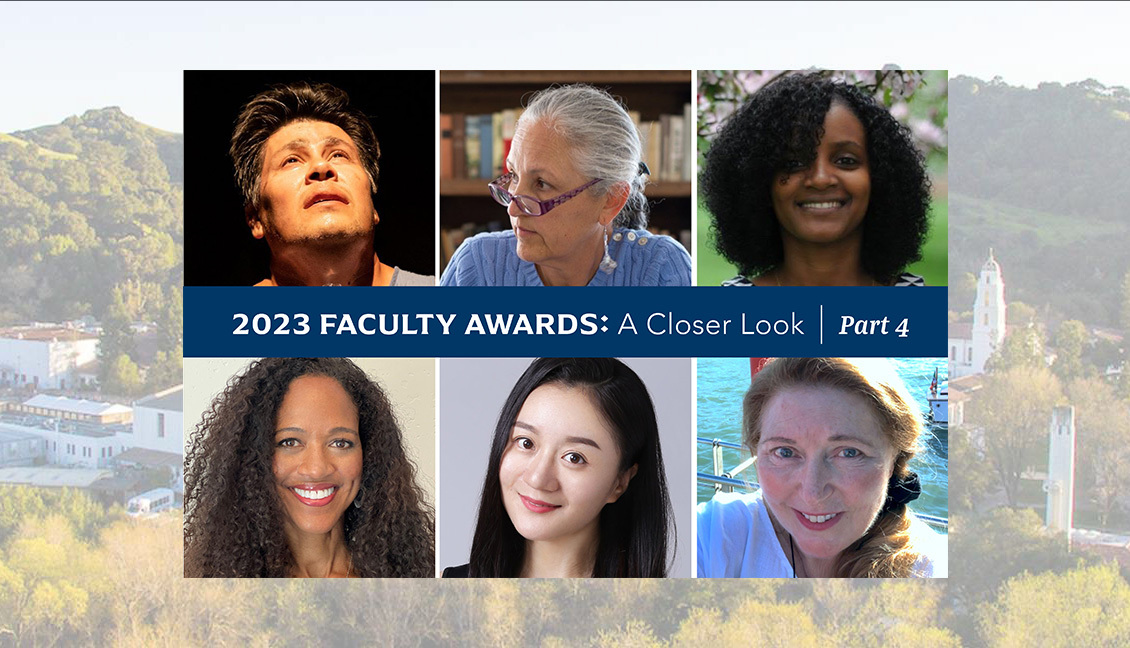
ABOVE: From top left, Prof. Rogelio Lopez, School of Liberal Arts; Dr. Myrna Santiago, School of Liberal Arts; Dr. Mireille “Mimi” Ukeye, Kalmanovitz School of Education. From bottom left, Dr. Kristen Freeman, Kalmanovitz School of Education; Prof. Jia Wu, School of Liberal Arts; Dr. Costanza Dopfel, School of Liberal Arts.
A Closer Look, Part Four: Saint Mary’s Faculty Members Awarded Grant Funding to Support Essential Research
These six recipients of the Provost’s Faculty Research Grant earned both accolades and much-needed funding for their projects. They’ll take on research matters related to dance, art conservation, history, and K–12 education.
In the fourth and final installment of the 2023 “Closer Look” series, we introduce you to work by six recipients of the Provost’s Faculty Research Grant. Supported by endowment funds set aside to help promote excellence among the College academic community, the grant program seeks to advance the intellectual and creative achievement of Saint Mary’s faculty.
“Our faculty exemplify the teacher-scholar model that many institutions around the country are attempting to emulate. Our faculty are equally devoted to scholarship and teaching, and to synergistic relationships between them,” said Provost and Executive Vice President Corey Cook.
The purpose of the grants, said Provost Cook, is to both promote and celebrate our vibrant intellectual community and commitment to lifelong learning.
Part 4 of our four-part “Closer Look” series examines the forthcoming research work of six of our 11 grant recipients.
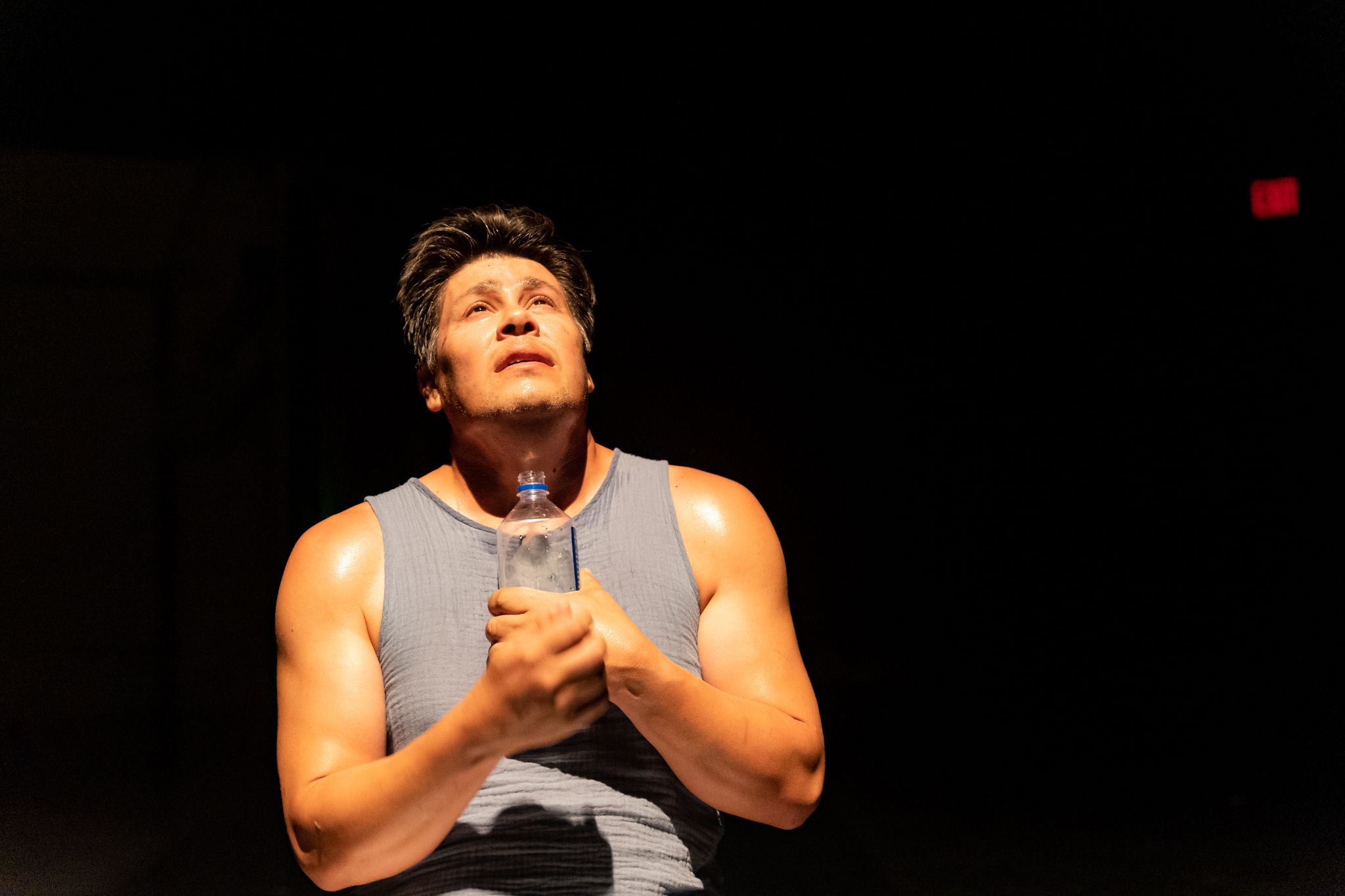
Professor Rogelio Lopez, Performing Arts Department (School of Liberal Arts) – “Folklórico: an exploration of the current dance form in the U.S. and Mexico, emphasizing technique and queer culture.”
For this research project, Professor Lopez will delve into the current technique and pedagogical practices of the Folklórico dance form. He will examine how it remains relevant and is evolving within Latine communities of the United States and Mexico. He’ll look specifically at how queer people have begun to shape the dance form for themselves.
The Provost Research Grant will be used to support a variety of travel costs to locales and events featuring Folklórico. Professor Lopez will visit:
- McAllen, Texas, to attend and take master Folklórico classes at the Asociación Nacional de Grupos Folklóricos, as well as attend rehearsals and converse with members of Conceptos Dance Company, a professional “border town” company that incorporates many western dance forms into its work;
- Oaxaca, Mexico, to attend Guelagetza, the biggest gathering of Folklórico dance in the world, in an effort to witness and learn about the Muxes’ Folklorico-based celebrations called Velas;
- Mexico City, Mexico, to attend rehearsals and converse with members of Mexico de Colores Dance Company (MdCDC). While traditional Folklórico is rigid in its gender binary roles, MdCDC consists only of queer men who perform in a unique form of drag. Professor Lopez will also attend a performance of The Ballet Folklórico de Mexico de Amalia Hernandez, the premiere Folklórico dance company in the world.
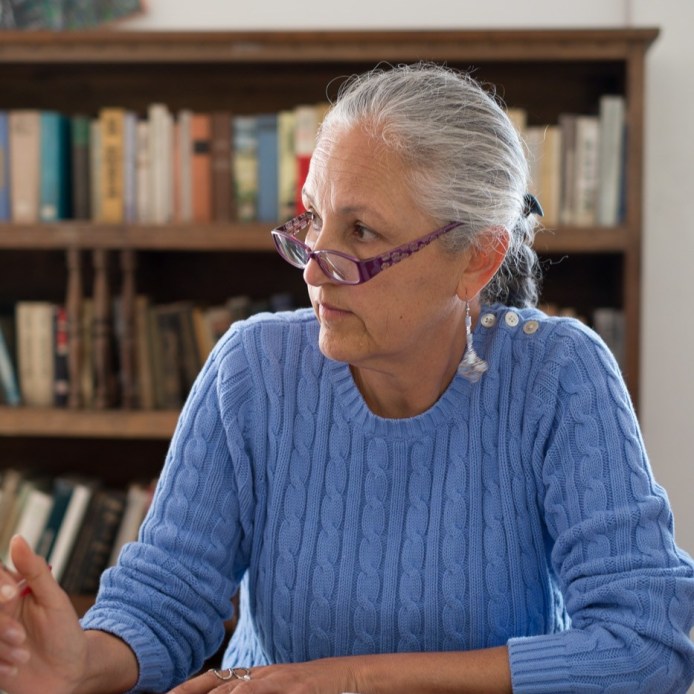
Dr. Myrna Santiago, History Department (School of Liberal Arts) – “‘The Day the World Ended:’ An Environmental History of the 1931 and 1972 Managua Earthquakes.”
Dr. Myrna Santiago is no stranger to deep environmental research—nor to being lauded for the high caliber of her work. She earned the prestigious Elinor Melville Prize for Latin American Environmental History and a Bryce Wood Book Award for a previous book, The Ecology of Oil: Environment, Labor, and the Mexican Revolution, 1900–1938. In 2018, she penned a chapter for A Living Past: Environmental Histories of Modern Latin America that looked at workers, nature, and communities in the mining and oil industries in that region of the world.
Now, with her latest Provost’s Research Grant, she is looking to work on her latest manuscript, “‘The Day the World Ended:’ An Environmental History of the 1931 and 1972 Managua Earthquakes.” The book centers on the devastating earthquakes that twice destroyed the capital of Nicaragua in the early- and mid-20th century and the political and environmental consequences of the disasters. Both earthquakes, Dr. Santiago points out, are intertwined with the country’s long-running dictatorship by the Somoza family, signifying the relationship between environmental history and politics.
For the past 10 years, Dr. Santiago has been conducting oral histories in Nicaragua about the 1972 earthquake. Grant funding will pay for the transcription of the Spanish language oral histories she has collected.
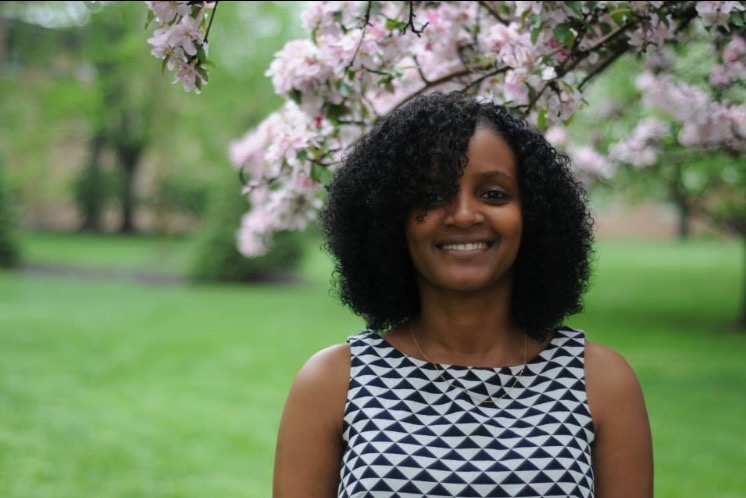
Dr. Mireille “Mimi” Ukeye and Dr. Kristen Freeman, Counseling Department (Kalmanovitz School of Education) – “A School Based Intervention Program for Students Experiencing Stress and Anxiety after School Closure.”
Dr. Mireille Ukeye and Dr. Kristen Freeman are conducting a study to enhance the mental, behavioral, and emotional health of a diverse set of K–12 students by introducing a social-emotional intervention program—Mindfulness Breathing—at a local public school. Their primary objective is to investigate the program’s effectiveness on students’ response to stress and anxiety, with the aim of improving academic performance and reducing stress-related symptoms.
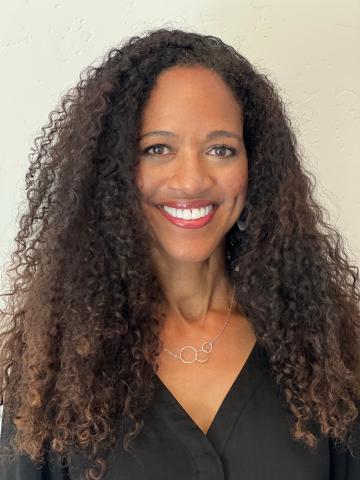
Mindfulness-based stress reduction, the researchers note, has proven to be effective in reducing stress among adults. The purpose of this study is to introduce mindfulness breathing as a means of improving anxiety and stress-related symptoms among high school students, and in doing so improving their academic performance.
The Provost Research Grant will be used for both the implementation of the intervention program as well as the analysis of data.

Professor Jia Wu, Performing Arts Department (School of Liberal Arts) – “A short Dance Film: 美國母女 MEI GUO MU NV (Mothers and Daughters)”
For this dance piece, Professor Wu intends to explore the theoretical foundations of gender studies and Richard Dawkins' concept of “self-genes” in order to define the role of the “Asian Mother” in contemporary Asian American social structures. She will create a narrative storyline by conducting a series of interviews with immigrant Asian mothers and daughters in the Bay Area. Her research will seek answers to the following questions:
- Is motherhood a historical construct rather than a natural or cultural phenomenon?
- How has the conventional stereotype of the self-sacrificing mother been challenged and transformed?
- How do modern mothers shift their frustrations from their husbands to their children?
The Provost Research Grant will provide the necessary funding to facilitate a collaborative effort with three other Asian American artists, including a composer, a designer, and an editor. Additionally, the project will feature costumes and props inspired by traditional Asian dance forms.

Dr. Costanza Dopfel, Department of Art and Art History (School of Liberal Arts) – “AH374 – Art Conservation and Restoration.”
Dr. Dopfel is the recipient of the Innovative Pedagogy Grant for her development of a unique art course. The first art conservation and restoration survey of its kind to be taught to an undergraduate audience, this course proposes a new model that is interdisciplinary, experiential, analytical and skill-based. Through its collaboration with Saint Mary’s College Museum of Art and the School of Science, the course merges the understanding of the object’s physical condition with the historical analysis of its cultural meaning, bringing together ethical, scientific, and artistic issues.
Through a series of hands-on activities led by professional practitioners, students will learn how to examine the artistic object, assess its condition, and suggest conservation interventions that respect and protect the objects’ historical significance.
By analyzing major restoration controversies—such as Chartres Cathedral or the Sistine Chapel ceiling—students will learn the critical importance of how choices are made in terms of the extent and goal of restoration. They will discuss the cultural and monetary value of forgeries and their place in art history while learning how spectrometry and chemical analysis can help identify fakes.
“The project brings together art-historical, ethical, and anthropological approaches with hands-on activities both in the lab and in the art studio,” Dr. Dopfel notes. The Innovative Pedagogy Grant will allow Dr. Dopfel to improve on this spring’s first course and develop it further into a series of courses on conservation and restoration, possibly leading to a new minor in Art Conservation and Restoration.
READ MORE: Explore all the faculty featured in the “Closer Look” series. Check out Part One, Part Two, and Part Three.
And see all the faculty members who were honored this year with Faculty Awards and Provost Research Grants.